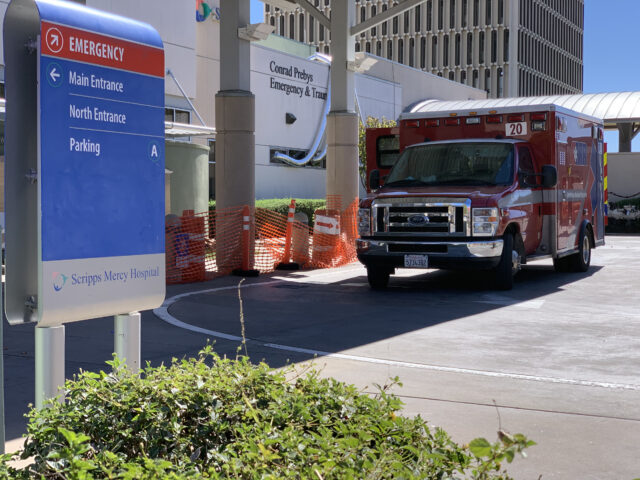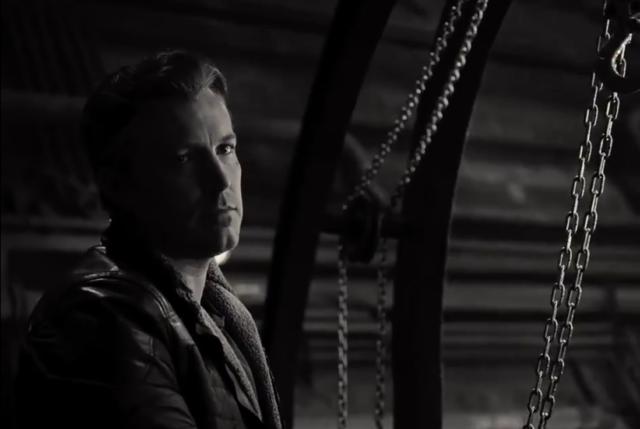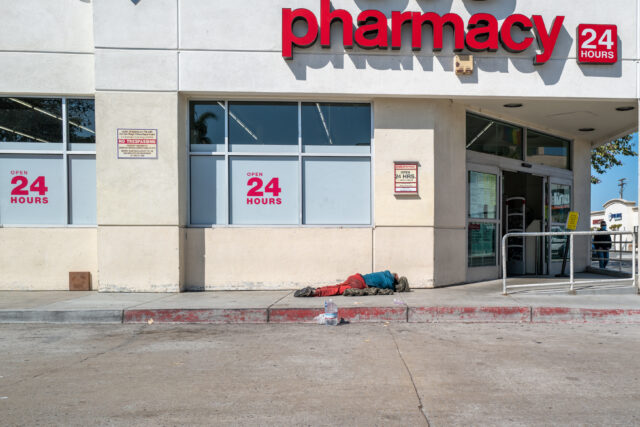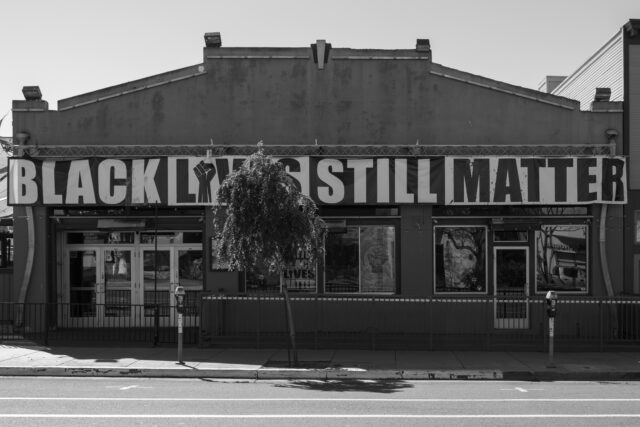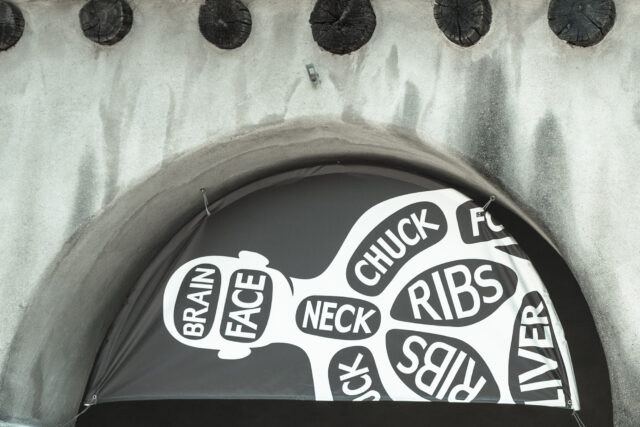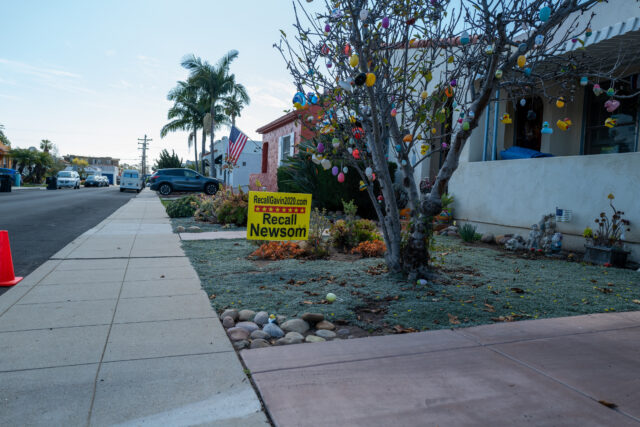As explained nearly three weeks ago, I tend towards thrifty shooting with a digital camera—in this instance Leica Q2. The Featured Image is only one of three captures—the other two at f/5.6 and f/8, with the latter greatly expanding the field of focus. But in the end, wisely or not, I chose the photo made wider open, because of how the painted bricks lead the eyes to the graphic. Vitals, aperture manually set: f/2.8, ISO 100, 1/2500 sec, 28mm; 10:28 a.m. PDT, April 12, 2021. In post-production, I used DxO Perspective Efex to tweak the geometry.
The evening before, I encountered two of my neighbors walking their dog. The husband said that I would want to stop by his house “and bring your camera”. You can see why. The couple live on Meade below Georgia, and they are long-time University Heights residents—about 22 years, if I recall rightly.

